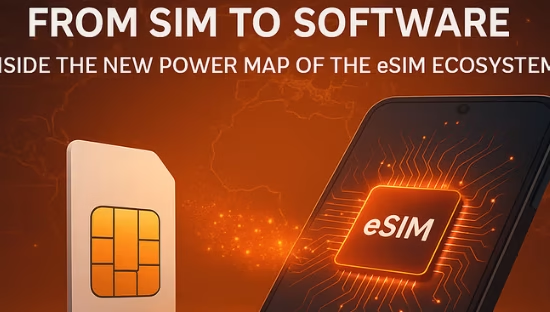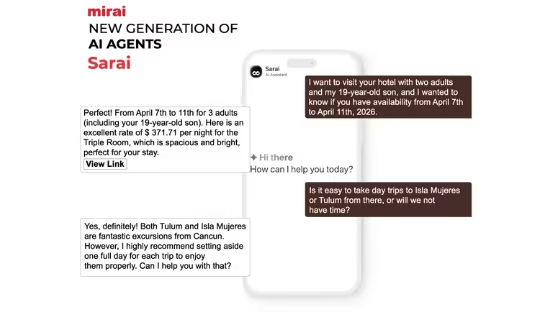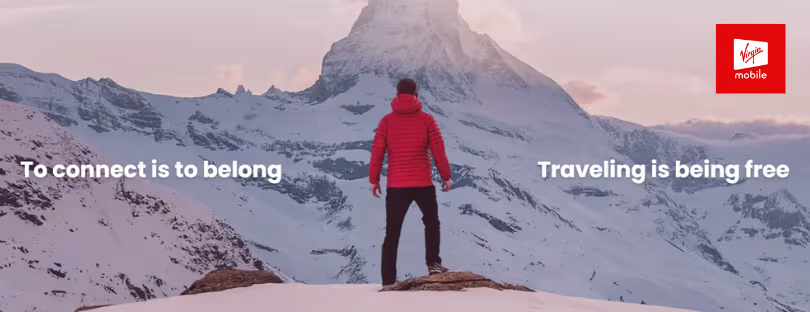
The eSIM “benefits” travelers trust least (and why that matters)
Every industry has its version of the “too good to be true” promise. In travel tech, that honor often goes to eSIM marketing—where every brand claims “global coverage,” “unlimited data,” or “premium support” that sounds flawless until you actually hit the tarmac. misleading eSIM features
At Alertify, we decided to ask travelers themselves what they think. In our weekly poll, we asked a blunt question:
Which eSIM feature feels the most like a lie dressed as a benefit?
After 819 votes, the verdict was refreshingly honest — and a little uncomfortable for the industry:
- “Unlimited plan”—40”%
- “Premium support”—30”%
- “Global coverage”—20”%
- “Auto-network switching” — 10%
That hierarchy speaks volumes. “Unlimited” tops the list because most seasoned travelers have lived through its real-world translation: throttled speeds, fine-print data caps, and daily resets that feel more like a puzzle than a plan. “Premium support” comes second because when you’re in a foreign airport and your eSIM won’t activate, “24/7 chat” doesn’t always mean help is immediate. “Global coverage,” while nice on paper, often hides patchy network quality or 4G-only speeds. And “auto-network switching,” which sounds high-tech, still relies on rudimentary mechanisms that don’t always prioritize user experience.
This poll isn’t just a popularity contest for skepticism—it’s a snapshot of trust gaps in the eSIM market. The travel connectivity sector has matured fast, but marketing has evolved faster than transparency. The promise of seamless digital connectivity—no plastic SIMs, no roaming headaches, no hidden fees—has been partly delivered. Yet, behind every glowing headline, many travelers still hit friction: weak coverage in rural zones, confusing activation flows, and data plans that promise freedom but deliver frustration.
The irony? eSIM technology itself works beautifully. What’s lagging is how providers communicate their benefits honestly and consistently. As the market expands—with forecasts suggesting that travel eSIM adoption will grow by over 400% by 2030—the players who survive won’t be the loudest marketers but the most transparent ones.
Let’s unpack what your votes reveal—not just about which eSIM features feel misleading, but why that perception matters for the future of travel connectivity.
Why “Unlimited” gets side-eyed
Let’s be real: “unlimited” rarely means “limitless.” In mobile, it often means unmetered access with caveats—traffic management, deprioritization above X GB, hotspot caps, SD video, and so on. Regulators have wrestled with this for years. In the US, enforcement actions and inquiries have focused on transparency around throttling and data caps; in the UK, ad rules demand any limitations be spelled out clearly. The point isn’t that unlimited can’t exist—it’s that “unlimited” without crisp disclosure burns trust, and frequent travelers are the first to notice when speeds nosedive abroad.
For travel eSIMs specifically, “unlimited” almost always hides a Fair Usage Policy. The best providers are getting better at surfacing FUPs prominently, but enough small print remains that voters instinctively choose this option as the most “dressed up” benefit. If you’re shopping, scan for the daily high-speed allowance, the throttle speed (e.g., 512 kbps vs. 1 Mbps is a very different experience), and whether tethering is included or capped.
“Premium support” is only premium when it solves your problem
“Premium support,” finishing second (30%), is telling. Support is an experience—not a badge. On a tight layover at 11 p.m., “24/7 chat” that asks you to reinstall an eSIM profile and reboot twice feels anything but premium. The strongest travel eSIM brands have shifted to proactive support (diagnostics, APN auto-set, in-app health checks, instant re-provisioning), but the industry still has plenty of “copy-paste help center” moments. The expectation bar is rising as more MNOs and serious MVNOs enter the travel eSIM game with enterprise-grade tooling and SLAs.
A practical tell: providers that publish known-issues dashboards, list carrier partners per country, and show real-time activation status tend to deliver support that feels “premium” because you need it less often.
“Global coverage” vs. meaningful coverage
A tidy third place (20%) went to “Global coverage.” On the surface, 200+ destinations sounds heroic. But seasoned travelers know that coverage maps do not equal experience. Roaming performance varies by country, by partner network, by band support on your device, and by real-world load. Independent measurement backs this up—roamers often see a different experience than locals, even on the same network. That doesn’t make global coverage a lie; it makes it an incomplete promise when it’s marketed without nuance.
When comparing “global” plans, look beyond the country count. Which MNOs are used in each country? Is 5G access included or LTE-only? Any speed shaping? And do you get auto-fallback to a second carrier if the primary partner is congested?
“Auto-network switching” is a sleeper feature (and it shows)
Only 10% picked “Auto-network switching,” which tells me two things. First, travelers actually feel the benefit when their phone hops from a weak partner to a stronger one without manual APN tinkering. Second, many implementations still aren’t smart enough to optimize—they just “fail over.” The best versions quietly prioritize quality (latency, packet loss, healthy 5G SA/NSA), not just signal bars. As more providers move from single-IMSI profiles to multi-IMSI or policy-driven steering, this will become a genuine differentiator—less marketing fluff, more fewer-taps-to-Instagram-works. Opensignal’s work underscores how user experience is contextual; smart switching narrows that roaming gap.
How this maps to the 2025 market: transparency is the new growth hack
Zooming out, travel eSIM is scaling fast. Analyst houses project a multi-billion-dollar market by 2030, with travel use cases leading the charge and specialist brands pushing incumbents to adapt. Growth is great—but growth without trust is a revolving door. The poll results are essentially a checklist of where trust breaks.
- Unlimited must become predictable: fixed daily high-speed buckets (e.g., 2–5 GB/day) + clear throttle speeds beat vague “fair use applies.” This aligns with stricter advertising guidance we’re seeing. Expect more providers to ditch the word “unlimited” entirely in favor of “daily high-speed with no hard stop.”
- Premium support must become proactive: telemetry-driven activation checks, carrier-level incident comms, and automated APN remediation. The B2B push by MNOs into travel eSIM is raising the bar here.
- Global coverage must become transparent coverage: list partner networks per country and note 5G access and speed policies up front. Third-party performance references help bridge the promise-reality gap.
- Auto-switching must become smart steering: multi-IMSI, policy controls, and live metrics that actually improve roamers’ latency and consistency.
How leading players stack up (patterns we’re seeing)
- Specialist travel eSIM brands popular with frequent flyers tend to market big country numbers and “unlimited” day passes. The best of them are now spelling out FUPs (daily GB, throttle rate, tethering rules) and adding country-level carrier lists in the app. That’s the direction to watch.
- Incumbent MNOs entering the travel eSIM market finally leverage their native roaming deals to offer cleaner experiences (e.g., real 5G access, VoLTE/VoNR where supported). They’re also better placed to do true policy-based network steering. Expect more MNO-branded travel eSIMs and airline tie-ins as the category matures.
- The broader trend line is undeniable: travel eSIM volumes are set to at least quadruple this decade, expanding from tens of millions of downloads today to hundreds of millions by 2030, which will intensify competition on experience, not just on price.
On the measurement side, independent network analytics continue to remind everyone that being “connected” and having a good experience are different things. That’s a healthy forcing function: it nudges providers to prove quality rather than rely on destination counts and “unlimited” badges.
So… what’s the real takeaway from the poll?
If you’re a traveler, treat “unlimited” like a format, not a feature. Compare the daily high-speed allowance, throttle rate, hot-spot rules, and whether 5G is included in the countries you care about. Look for providers that publish partner networks per country and show you activation health before you board. Bookmark a neutral performance source to sanity-check expectations country by country.
If you’re a provider, your growth ceiling is now set by clarity. The market is growing rapidly enough that the winners will be the brands that eliminate the ambiguity of “unlimited,” make support invisible through automation, and convert auto-switching into measurable QoE gains. There’s a regulatory wind at your back, too—authorities are leaning into transparency around data caps and speed management. Build for that future rather than around it. misleading eSIM features
This week’s poll:
Conclusion: “Unlimited” isn’t dying—ambiguity is
Our poll doesn’t say “unlimited is bad.” It says travelers are done with the ambiguity of unlimited. In a category moving from early adopters to mass travel utility, trust becomes the differentiator. CCS Insight and others predict that the travel eSIM segment will swell into a multi-billion-dollar market by 2030, compressing margins and driving convergence in pricing. The edge will live in how honestly and intelligently providers deliver the basics: clear allowances, transparent partners, proactive support, and smart network steering that narrows the roamer-vs-local gap. Brands that execute here will feel less like they’re selling a SIM and more like they’re selling certainty. That’s the benefit; no one will vote as a lie.











